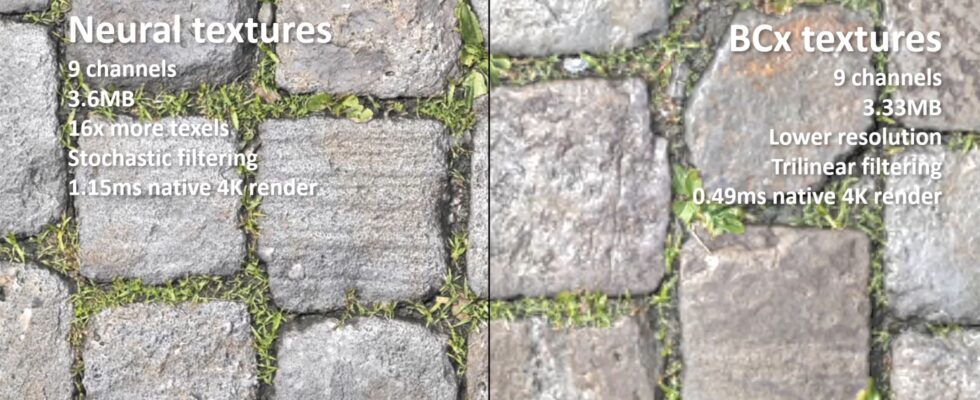Alongside DLSS and a host of other techniques, NVIDIA is working to improve texture compression on our graphics cards.
GPU power, amount and speed of video memory are important elements when it comes to graphics cards, but they are not the only ones. NVIDIA engineers are working on neural compression.
Reduce VRAM requirements by 30%
Texture compression is one of those areas of research that can speed up information processing without the need to boost technical specifications again and again.
In this sense, neural compression joins the work carried out by NVIDIA in the management of super-sampling (DLSS) for example, and this, even if it is still too early to speak of commercial exploitation. Through a technical document, the team led by Karthik Vaidyanathan only presents its work in this area.
The stated objective of the researchers is to come up with a technique making it possible to offer more detailed textures thanks to an image definition four times greater while reducing the impact on memory by 30%.
Detailed presentation on August 6
The complete presentation of the work of Karthik Vaidyanathan’s team will take place on August 6th. In the meantime, the first results unveiled by NVIDIA are promising as evidenced by the few illustrations unveiled.
Of course, NVIDIA seeks to go further than the compression techniques currently used (AVIF and JPEG XL). In this sense, the idea is to use textures four times more precise, in 4096 x 4096 in the example presented against 1024 x 1024 widely used. Logically, the level of detail is much higher, but their technique manages to reduce video memory requirements by 30%.
Also, compared to the more commonly used block-based compression algorithms, there’s no need for custom hardware here: NVIDIA’s neural compression employs a matrix multiplication method, which is accelerated by all modern GPUs.
On paper, the advanced technique seems to combine almost all the advantages and to be particularly adapted to the needs of current developers. Now let’s wait until August 6 to see what NVIDIA has planned.
Source : NVIDIA

18